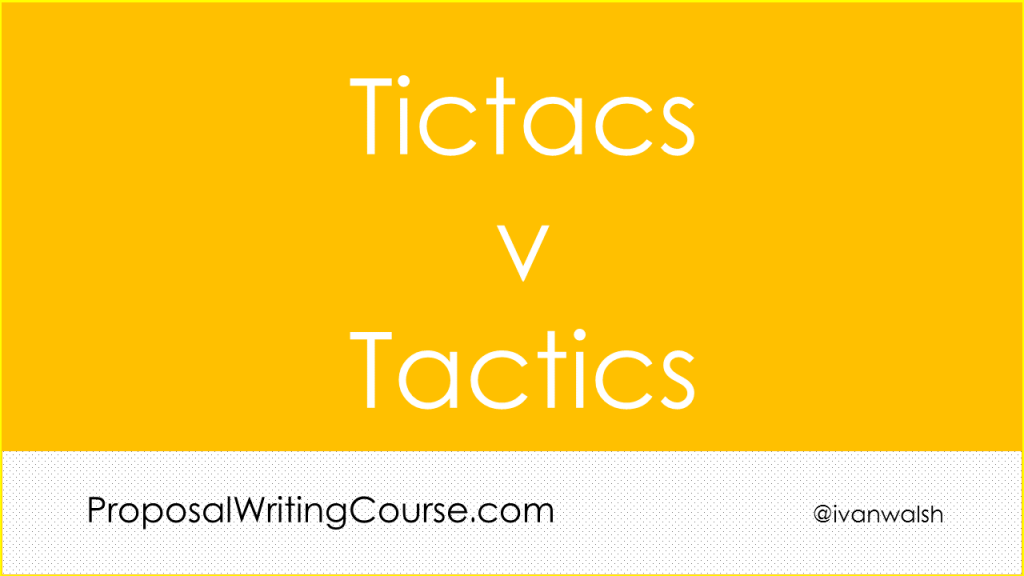How does psychology affect your business proposal’s success rate?
While most proposal writers focus on ‘hard’ data and ‘fixed’ costs, before you start your next tender document, consider other areas that typically get overlooked.
For example?
Look at underlying issues, pain points, and ‘emotional triggers’ that influence the proposal evaluation team.
Business Proposal Writing Tactics
With this in mind, if this is your first time writing a business proposal, use these guidelines to improve the writing style, format, and success rate of your bid.
Ask yourself the following questions:
- Emotional Needs – Does your proposal identify a specific problem or set of needs? If so, how effectively does your solution address this?
- Commitments – List the activities you commit to performing so the solution will succeed.
- People – Identify the people (not ‘human resources’) that will be used to design, develop and implement your solution?
- Results – What are the intended outcomes of your solution? How does this reduce the pain points currently experienced by the contract provider? Build themes around these points.
- Assumptions – Make sure you understand the funder’s guidelines and that there are no assumptions. If you’ve read their guidelines and are still unsure, make a call, speak with their proposal officer and ask for clarification. Don’t leave it too late.
- Proof – It’s not enough to say that your solution will be a ‘model’ for other programs; demonstrate how this will be achieved. Use case studies and white papers to build your credibility.
- Framework – One of the limitations of the word ‘solution’ is that it implies the other person has a problem. While this may be true, other more complimentary terms can be more effective. Choose words carefully. Framework can serve as an alternative to the clichéd solution, providing you can demonstrate it is a framework.
- Executive Summary – Develop an Executive Summary in plain English. Avoid the trap of resorting to clichés, jargon and industry speak. Remember, there’s a person on the other side of the document and they hate marketese as much as you. Write for people!
- Where’s the beef? – In the conclusion section, dovetail all the main points into a single message that your reader can relate to. And, include a Call to Action, if possible. What does this mean? It means that after they’ve read the final section, they feel compelled to take some action, such as read more about you, download your white papers, check your statistics, or some other action. But, if they read to the end, put it down, and then move on to the next… you’ve left no real impression.
- Footnotes – Instead of burying information in the appendix, learn how to create footnotes in Microsoft Word and add these to your document. This allows the reader to continue reading or scan the footnotes on the same page. Don’t make them dig around to find the answer. Use footnotes to explain line items in your budget, for example.
- Transparency – If the funder asks you to identify contributors, include it directly after the budget.
- Cultivate a relationship – Nobody likes to buy from strangers. Allow time to build a relationship with the grant-maker. Find ways to share information, whether through visits, phone, or email; accept that you may not win on the first application but by cultivating a relationship, you put yourself on the grid for the next set of contract awards.
- Give Hope – As a dentist once said to me, ‘I try to remember there’s a person attached to the tooth.’ In the same way, develop themes in your proposal that touch the reader’s heart and evokes positive emotions. Don’t go overboard with positivity as this may feel insincere; instead find subtle ways to build trust and convey hope.
- Create a Bridge – Once you have defined the problem or underlying needs, make a ‘bridge statement’ that shows how your project will help them overcome their problems.
- Storytelling – Stories are powerful in ways that statistics, figures, and data are not. Use stories to illustrate your themes. Give examples of people you’ve helped and how their lives were improved as a result of your efforts. Highlight your story by using indentations to separate it from the rest of the text.
Proposal Writing Tactics
Psychology plays a key role in how business proposals are won and lost.
Even if you don’t use these fifteen guidelines, remember to write for one person.
While many people may read it, each one will read it one at a time. Keep this person in mind as you type… and you’ll see the results.
What else would you add? How do you try to influence proposal evaluators?

